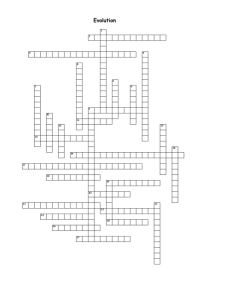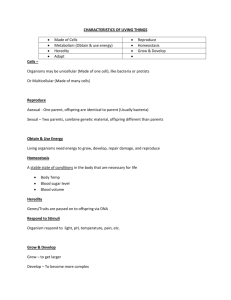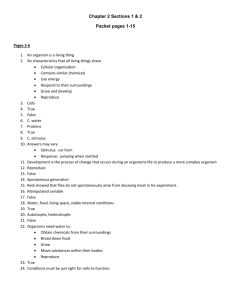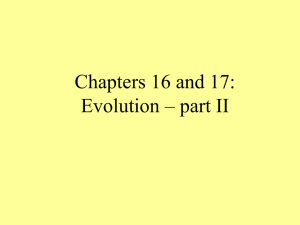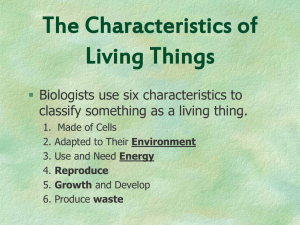Microevolution vs Macroevolution Microevolution Change in allele
advertisement
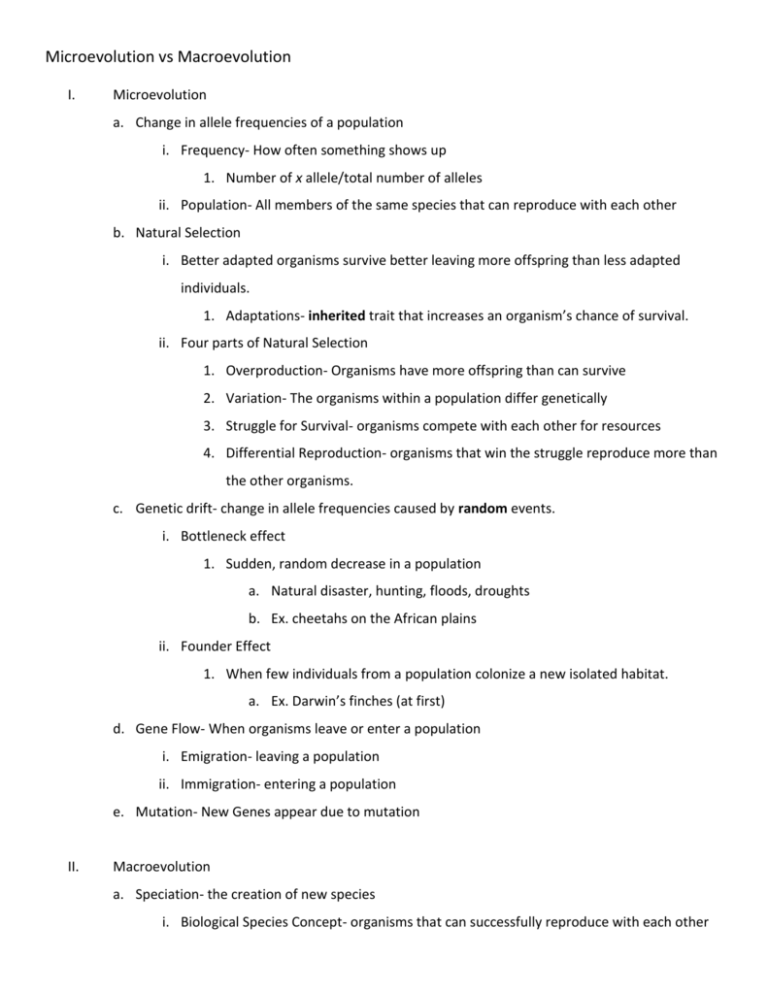
Microevolution vs Macroevolution I. Microevolution a. Change in allele frequencies of a population i. Frequency- How often something shows up 1. Number of x allele/total number of alleles ii. Population- All members of the same species that can reproduce with each other b. Natural Selection i. Better adapted organisms survive better leaving more offspring than less adapted individuals. 1. Adaptations- inherited trait that increases an organism’s chance of survival. ii. Four parts of Natural Selection 1. Overproduction- Organisms have more offspring than can survive 2. Variation- The organisms within a population differ genetically 3. Struggle for Survival- organisms compete with each other for resources 4. Differential Reproduction- organisms that win the struggle reproduce more than the other organisms. c. Genetic drift- change in allele frequencies caused by random events. i. Bottleneck effect 1. Sudden, random decrease in a population a. Natural disaster, hunting, floods, droughts b. Ex. cheetahs on the African plains ii. Founder Effect 1. When few individuals from a population colonize a new isolated habitat. a. Ex. Darwin’s finches (at first) d. Gene Flow- When organisms leave or enter a population i. Emigration- leaving a population ii. Immigration- entering a population e. Mutation- New Genes appear due to mutation II. Macroevolution a. Speciation- the creation of new species i. Biological Species Concept- organisms that can successfully reproduce with each other 1. Example: dogs a. Although they look different, they can all successfully reproduce (mutts) 2. Non-example: Horse and Donkey a. Although they can reproduce (mule) it is not “successful” because the mule is sterile, and therefore cannot continue to pass on genes. b. Causes i. Reproductive Isolation 1. Differences in reproduction cause genes to not mix 2. Timing- reproduce at different times (seasons, time of day, etc) 3. Behavior- courtship and mating behaviors differ (songs, coloring, etc) 4. Habitat- living in different areas of same habitat (bottom of lake vs middle) 5. Reproductive incompatibility- need I say more? ii. Geographic Isoloation 1. Members of a population are physically separated 2. Ex- squirrels on opposite sides of the grand canyon 3. Adaptive Radiation a. Evolution from a common ancestor resulting in diverse species adapted to different environments c. Rate of Evolution: Punctuated Equilibrium vs Gradualism i. Gradualism-Slow, constant change of species throughout time ii. Punctuated Equilibrium- Long periods of no change interrupted by brief (geologically speaking) periods of rapid evolution

